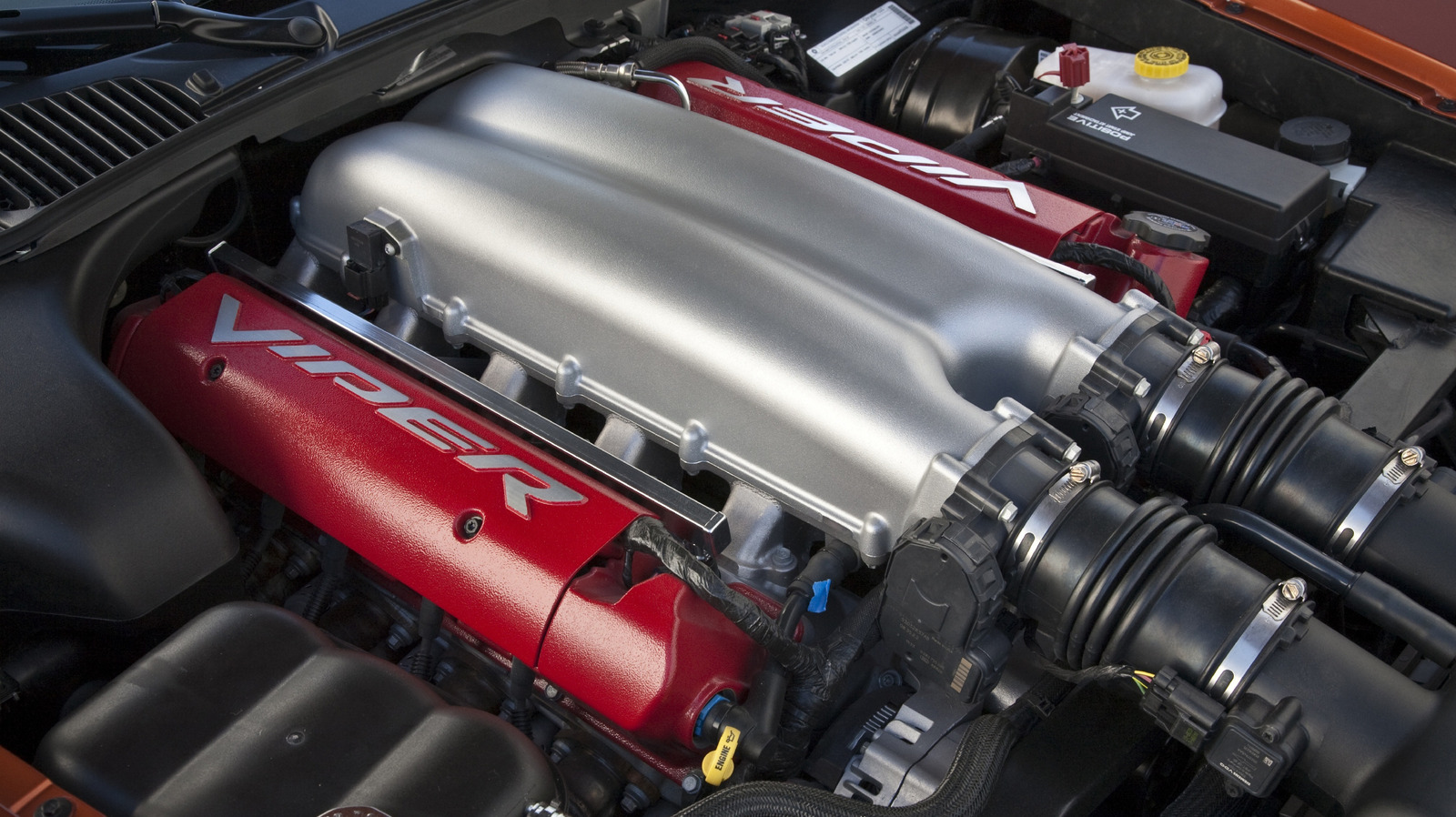
The first-gen Viper cranked out 400 horsepower and 450 pound-feet of torque from its 8.0 liter V10 — enough to propel the car from 0-60 MPH in 4.4 seconds, and a 13.1 second standing quarter-mile. As thrilling as the early Viper was to drive, it made no pretensions about being anything other than a barebones sports car. It had no air conditioning, no air bags, no outside door handles, and plastic curtains for side windows.
By the time the second-generation Viper V10 launched in 1996, engineers had put the engine on a serious diet by trimming unnecessary material from the block and cylinder heads. Dodge also fitted a more aggressive camshaft and a new, less restrictive exhaust system.
The first-generation used an exhaust system which exited out the side of the vehicle, ahead of the rear wheels, serving as a modern take on the “side pipes” that graced vintage cars like the Shelby Cobra and older Corvettes. This side exhaust had to be very quiet due to the close proximity to the occupants’ eardrums.
Engineers reckoned that if they relocated the exhaust exits to the rear of the car, a louder free-flowing exhaust would be permissible. So the Viper gained 50 horsepower, the V10 now belting out over 450 horsepower, but lost its distinctive side exhaust. Fortunately, the side pipes would make a triumphant return in the 2003 third-generation car, with the addition of a crossover pipe to keep the volume in check.
Stay connected with us on social media platform for instant update click here to join our Twitter, & Facebook
We are now on Telegram. Click here to join our channel (@TechiUpdate) and stay updated with the latest Technology headlines.
For all the latest Automobiles News Click Here
